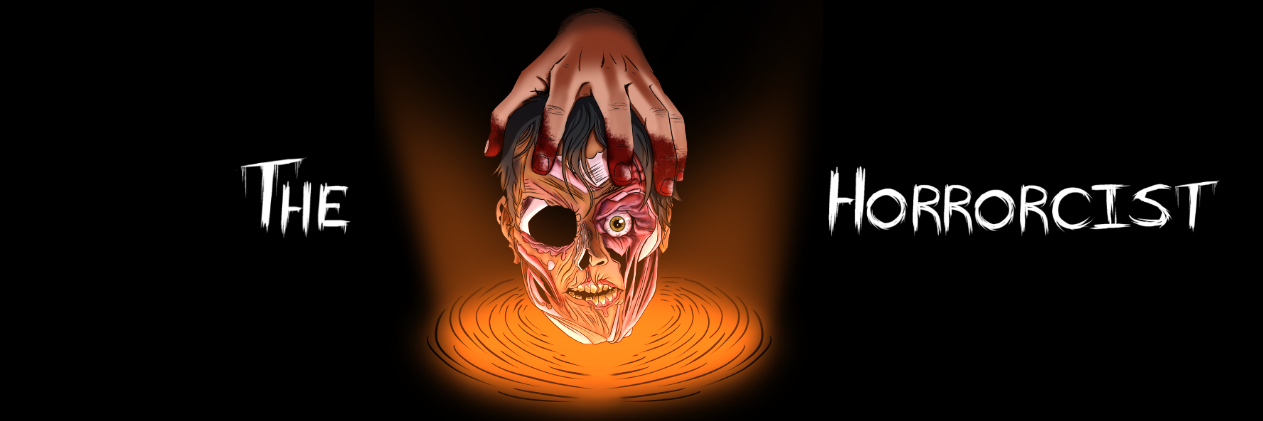Bunnyman: vengeance
Isaac Thorne review

A Hop, a Skip, and a Jump
Bunnyman Vengeance suffers from choppiness and a lack of story
I have not seen the first two films in Carl Lindbergh’s Bunnyman franchise. Therefore, I sat down to watch Bunnyman Vengeance (2017), the third and final film, not really knowing what to expect. Is it horror? Is it comedy? Is it a horror comedy? Unfortunately, even after watching the film I am still unable to completely answer those questions.
Without having seen the first two installments, I am tempted to label this film a horror comedy. It does contain elements of both. The giant bunny suit and a bizarre Tim and Eric-style dream sequence make for some comedy. Gore and violence obviously make for horror. However, there’s not enough story between those elements to generate enough empathy for the characters so that the viewer feels comfortable either laughing or cringing.
We begin the tale by seeing a home movie-style memory of what I assume to be Bunnyman’s genesis. He is a child who is, for reasons never revealed, tortured and quite literally torched by a couple of older boys. As the young man lays in a field burning in an obviously computer-generated fire, he is eventually doused by a younger, intellectually challenged child. We later discover that all four of these characters were at some point part of a Rob Zombie-like murderous “family,” and that the Bunnyman (Michael, as he is called by the others) left them to go on murderous rampages that I assume are documented in the first two franchise installments. The trio of brothers who were originally responsible for torturing and dousing the young Bunnyman manage to reconnect with him as an adult as he is about to be taken down by law enforcement. They kill the officer and bring Michael the Bunnyman back into their fold. He comes to live with them in a haunted attraction that the trio are attempting to construct and open for business.
It is at this point in the film that the story devolves into a series of brutal (and time-killing) murders for murder’s sake. The brothers occasionally fight amongst themselves about whether Michael the Bunnyman should have been brought back to them. At least one of the brothers fears that Michael’s inability to control his rage will destroy their attempt to open an attraction that generates income. Irritatingly, these same characters are both responsible for instilling that rage in Michael and for feeding it when they take him out on his first killing spree following his “return home.”
Without attempting to introduce spoilers in this review, you can probably guess the payoff at the end of this film based on its introduction memory sequence and the title alone. Story aside, there are some good things about the film. The majority of the actors are adequate and believable. The best among them is Pucci Tres, who plays the adult version of the intellectually challenged character Jacob. In addition, Lindbergh knows how to frame shots and photograph a movie. For example, the first time we see all four of the main characters grouped together around a dinner table, Jacob is seated in front of a statue of an angel holding a skull in her hands. The shot is framed so that the angel’s wings appear to be jutting from Jacob’s own back. Immediately, we know he is an innocent caught up in evil. There are enough of these types of shots in the film to lead the viewer to believe that Lindbergh sets them up intentionally.

Add to Lindbergh’s credit that he appears to be a capable actor playing the role of Michael the Bunnyman, even when restricted by a giant bunny costume. He is able to gesture and emote despite the fact that we are unable to see his face through the bunny head.
Unfortunately, the lack of story and the filler kills that comprise the majority of the film’s running time combined with choppy sound editing and unconvincing computer-generated blood and gore make this difficult to enjoy. I found myself hopping away from the viewing several times to check how much time was left on the video. It might have been more interesting if we had seen more of the conflict between the brothers regarding Michael’s presence, and if that conflict had been more believable. It’s possible we might have even sympathized with them had viewers been led to believe that the trio’s construction of the haunted attraction was an attempt to go legit and move away from their evil past, only to have Michael the Bunnyman’s sudden reappearance in their lives drag them backward.
Overall, this is not a film I recommend unless you are already invested in the Bunnyman franchise and want closure. Because I have not seen the first two films, I was not invested. Nor does this final installment make me want to set about seeing the first two installments.





